When choosing a style guide for your text, consider the genre, field and publication format. Style guides such as AP, APA, CMOS and MLA serve different purposes. Most commonly, AP works for journalism, APA for academic sciences, MLA for humanities and CMOS for humanities and trade books. Consulting a style guide ensures consistency in writing by providing specific rules on grammar, citations and formatting.
When it comes to writing, one of the most crucial decisions a writer can make is to choose a style guide. A style guide provides a set of rules and guidelines for writers to follow, ensuring consistency and accuracy in their work. With so many style guides available, such as CMOS, AP, APA, MLA, and the Bluebook, it can be overwhelming for writers to determine which one to use. Each style guide caters best to a different genre, form and topic of writing. This text will explore the importance of choosing a style guide and how it can benefit writers, authors and publishing professionals.
- What is a style guide?
- How to choose a style guide?
- When to consult a style guide?
- Associated Press (AP) Stylebook
- Publication Manual of the American Psychological Association (APA)
- The Bluebook
- Chicago Manual of Style Guide (CMOS)
- Modern Language Association of America (MLA) Handbook
- Preparing your text for publication
- Resources for following a style guide
What is a style guide?
A style guide is a set of rules that standardises writing elements like grammar, punctuation and formatting to ensure consistency and clarity across texts. It helps writers maintain uniformity in style, tone and structure, especially in professional or academic contexts.
The Oxford Guide to Style, originally published in 1893 as Hart’s Rules for Compositors and Readers at the University Press, Oxford. is considered to be the first documented style guide. It provided guidelines on grammar, punctuation, and typesetting for printers and publishers, and it laid the foundation for modern style guides used today.
More broadly, style guides eliminate uncertainties in writing and editing when multiple options are possible. For example, both ‘advisor’ and ‘adviser’ are correct spellings of the same word. A style guide will specify which form is preferred. For instance, the Chicago Style Guide (CMOS) prefers ‘adviser.’
Overall, style guides improve the readability and comprehension of the texts by presenting similar information in similar ways and eliminating errors and inconsistencies. Consistency and clarity are one of the most important features of good writing, and style guides help guide and guard them.
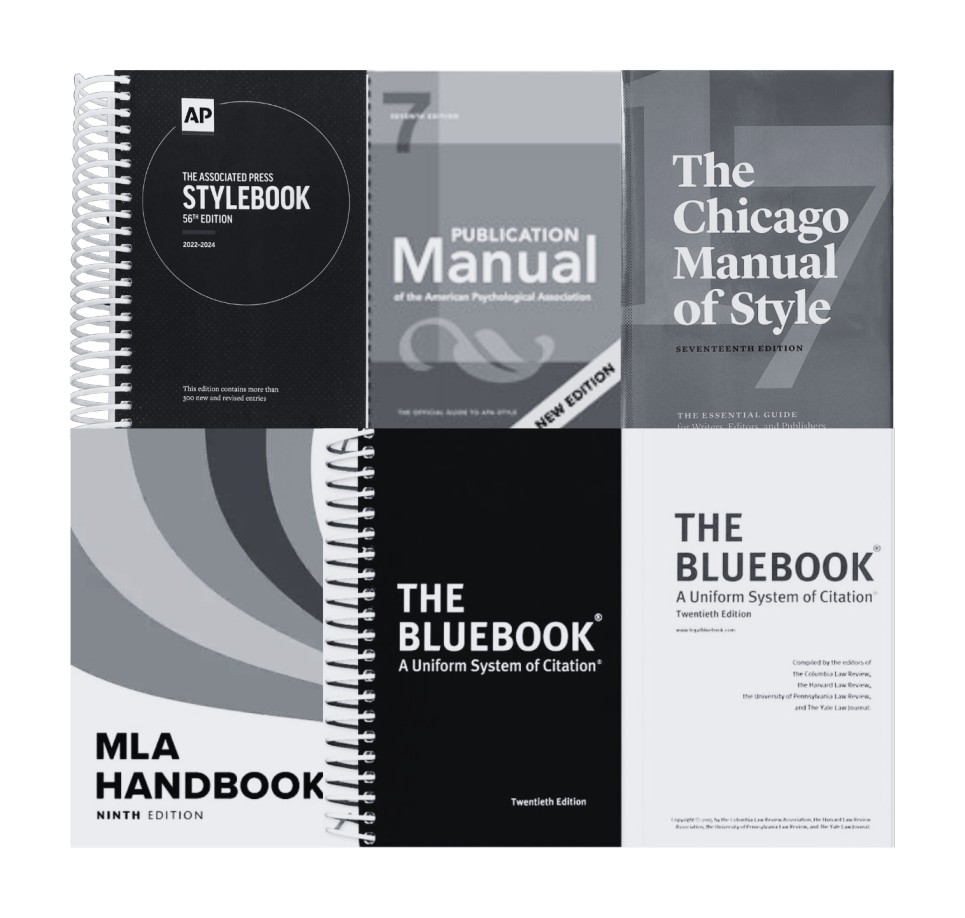
How to choose a style guide?
When choosing a style guide, consider the field or discipline of the text, as different guides are suited to specific areas, such as APA for social sciences or AP for journalism. Also, take into account the genre and type of writing, as well as any house or company style requirements. Finally, think about the medium of publication, as some guides are better suited to print, while others are ideal for digital formats. This is because no style guide works perfectly. Each has been developed for different areas and forms, so to choose a style guide that will work for your text, consider the following:
- House or company style. If you are working with a text (a book, journal article, white paper) that will be published by an academic press, publishing house, journal editorial board or company, ask about their house style guide.
- Genre/field. Learn which style guide is standard for the writing you do. This will help you prepare manuscripts for publishing and offer you guidance to turn.
- Niche or field. Many industries and academic fields follow specific style guides designed to express clearly and consistently their niche needs.
- Publishing format. A blog post will be better suited to follow a different style guide than an academic book, so the medium of publication is also important to consider when you choose a style guide.
When to consult a style guide?
No writer or editor is expected to remember all the language rules. That is why we have dictionaries and style guides. And when in doubt, you can consult them regarding:
- citations
- punctuation
- capitalisation of headings
- compound words
- abbreviations and acronyms
- formatting
- inclusivity and sensitivity
What are the most common style guides?
Let us review some of the most commonly used style guides, such as AP, APA, Bluebook, Chicago, IEEE or MLA, how they differ and for what texts they were designed.
| Style | Common usage |
| AP | Journalism, media, marketing, public relations |
| APA | Social, medical and natural sciences and humanities |
| The Bluebook | Legal, government and administrative texts |
| CMOS | Humanities, social sciences, sciences; fiction and non-fiction |
| MLA | Humanities, especially languages and literature |
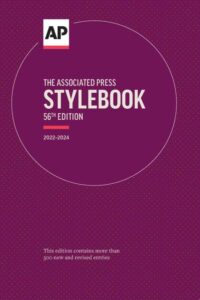
Associated Press (AP) Stylebook
AP style is a set of standards for writing in news media and one of the most comprehensive style guides. It includes recommendations for grammar, spelling, punctuation and usage. Because media and journalists use it, it is updated annually to define standards for news topics. For instance, AP advises on language around COVID-19 or gender-neutral pronouns, focusing on how to choose the right term (and avoid the wrong one) in a given context. The paperback version of the 57th edition of AP Stylebook costs $34.95, while the online annual subscription for 1 user is $30.
Examples of texts that could work best with the AP style guide include the following:
- a breaking news article covering a natural disaster and its impact on local communities
- a feature story profiling a pioneering female entrepreneur in the tech industry
- an investigative report uncovering corruption within a city government
- an editorial expressing opinions on a controversial social issue
- a travel article highlighting the attractions and culture of a remote island destination
- an obituary honouring the life and achievements of a prominent public figure.
Publication Manual of the American Psychological Association (APA)
APA style guide started in 1929 as an article written by a group of psychologists, anthropologists and business managers. APA has published seven editions of the Publication Manual since 1952. APA style guide comprises a set of standards to make scientific writing easier to understand. They include guidelines on grammar, spelling, punctuation and language usage. It also developed its signature in-text citation style, ethical standards for publishing research and guidelines on how to format an academic paper. Academic social, medical and natural sciences and humanities commonly follow the APA style guide. APA’s most recent, 7th edition of the Publication Manual costs $31.99 in paperback. Hardcover costs $57.99 and the spiral-bound version is $44.99.
| In-text citation | (Woodward, 1987, 315–16) |
| Reference | Woodward, D. (Ed.). (1987). Art and Cartography: Six historical essays. University of Chicago Press. |
Examples using the APA style guide include the following:
- a research report on the effectiveness of behavioural therapy for treating anxiety disorders
- a meta-analysis examining the relationship between smartphone use and sleep quality among adolescents
- a literature review exploring the psychological factors influencing workplace productivity
- a dissertation investigating the predictors of resilience among survivors of trauma
- a conference presentation on the neurobiological mechanisms underlying substance use disorder.
The Bluebook
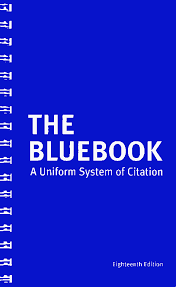
The Bluebook: A Uniform System of Citation is the style guide for legal citation originating in 1926. It explains how to cite court cases, constitutions, statutes, legal codes, reports, periodicals, government documents and many other types of texts that serve as sources in legal writing.
A quick Bluebook citation guide is available for free. The 21st edition of Bluebook is also available as an online subscription ($39) and in print ($46). It is one of the most comprehensive authorities style guides refer to the Bluebook as legal subject matter experts.
Here are some examples of texts that should follow the Bluebook:
- a law review article discussing recent developments in international human rights law
- a legal memorandum analysing the application of antitrust laws to tech giants in the digital age
- a journal article examining the intersection of copyright law and artificial intelligence in creative industries
- a legal textbook explaining the principles of contract law and their application in business transactions
- a seminar paper exploring the legal implications of blockchain technology in finance and banking
- a law school exam essay responding to a hypothetical scenario involving constitutional law issues.
Chicago Manual of Style Guide (CMOS)
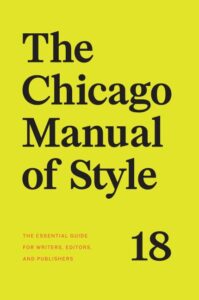
CMOS was developed by the Chicago University Press in 1906 and has been updated 18 times since. It offers standards for writing in commercial and academic publishing and is one of the most widely used style guides. CMOS includes recommendations for grammar, spelling, punctuation and manuscript formatting. It also offers two variations of source citation: notes and bibliography (footnotes /endnotes with superscript numbers) and author-date (in-text citations similar to APA). Academic writers, predominantly in humanities, and trade fiction and non-fiction publishers most commonly use CMOS. The newest, 18th edition costs $75; and the annual subscription costs $44.
| Date-author system | |
| In-text citation | (Woodward 1987, 315–16) |
| References | Woodward, David, ed. 1987. Art and Cartography: Six Historical Essays. University of Chicago Press. |
| Notes and bibliography style | |
| Footnote/endnote | David Woodward, ed., Art and Cartography: Six Historical Essays (University of Chicago Press, 1987), 315–16. |
| References | David Woodward, ed. Art and Cartography: Six Historical Essays. University of Chicago Press, 1987. |
Texts that would work best following the CMOS guidance include the following examples:
- a historical monograph tracing the development of architecture in Renaissance Italy
- a scholarly journal article analysing the use of symbolism in the works of William Faulkner
- a biography chronicling the life of a prominent political figure during the American Civil War
- a documentary film script detailing the experiences of refugees fleeing war-torn regions
- an annotated bibliography compiling resources on feminist theory in literary criticism
- a collection of essays examining the impact of globalisation on indigenous communities worldwide
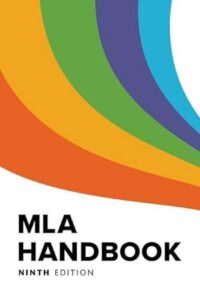
Modern Language Association of America (MLA) Handbook
MLA style guide primarily established guidelines for citation and formatting in academic humanities, particularly literature and language research. This style focuses on source citations. However, it provides limited guidance on writing mechanics and no recommendations for language usage. MLA style began in 1951 when the Modern Language Association of America published the MLA Style Sheet. It was later updated into the MLA Handbook. Since 1977, MLA has published nine editions of the Handbook. Most of its content has been available online through the MLA Style Center since 2009. The 9th edition of the MLA Handbook in paperback costs $28; the hardcover version is $50 and an ebook is $9.24.
| In-text citation | (Woodward, 315–16) |
| References | Woodward, David, editor. Art and Cartography: Six historical essays. Chicago: University of Chicago Press, 1987. |
Finally, here are some examples of texts following the MLA style guide:
- an academic article analysing the use of allegory in a novel by Nathaniel Hawthorne
- an annotated edition of Shakespeare’s Hamlet, with critical commentary and textual notes
- a conference presentation discussing the influence of feminist theory on contemporary literature
- a book review evaluating the portrayal of race in a recent work of fiction by Toni Morrison
- a dissertation examining the representation of trauma in graphic novels
- an interview with a prominent author discussing their creative process and inspirations
How to prepare your text for publication?
Once you have chosen a style guide and completed your manuscript, preparing your text for publication is important. This involves a thorough editing process to ensure that your work is polished and error-free. Working with an experienced editor familiar with your chosen style guide can make all the difference in the success of your publication. Here are some different types of editing services that an editor can offer:
- Developmental editing focuses on the content and structure of your manuscript. A developmental editor will provide feedback on your writing style, story structure, character development, pacing and more. This type of editing can benefit writers who need help with the organisation or flow of their ideas.
- Copyediting focuses on the mechanics of your writing, including grammar, punctuation, spelling and consistency. A copyeditor will correct errors in your text and ensure that it adheres to the conventions of your chosen style guide.
- Proofreading is the final stage of the editing process and focuses on catching any remaining errors in your manuscript. A proofreader will review your text for typos, spelling and formatting errors before publication.
Resources for following a style guide
Several tools can make following your chosen style guide easier and more efficient. Here are some examples:
- Citation Machine: An online tool that helps generate citations in various styles, including APA, CMOS and MLA.
- Mendeley: A reference management tool that helps researchers organise their sources and ensure proper citations in their chosen style, such as APA, CMOS, Harvard and MLA.
- PerfectIt: A Word plugin that integrates with CMOS, helping you check for consistency, punctuation and formatting errors directly in your document.
- Zotero and EndNote: Reference management tools that automate the creation of citations and bibliographies for various styles, including APA, MLA and Chicago. For instance, Zotero supports over 9,000 styles, while EndNote has over 6,000 styles.
Key takeaways
One of the most crucial decisions a writer can make is to choose a style guide. A style guide provides a set of rules and guidelines for writers to follow, ensuring consistency and accuracy in their work. In a nutshell, their primary purpose is to ensure that all documents in a given environment present a consistent look and use of language. Each has been developed for different areas and forms, so to choose a style guide that will work for your text, consider various factors. AP style is used in news media, and APA in academic, social, medical and natural sciences and humanities. The Bluebook works with legal, government, and administrative texts. CMOS guides humanities, social sciences, sciences, fiction, and non-fiction, and MLA in humanities, especially languages and literature.
Contact me to choose the right style guide for your text and ensure it is publishing-ready. You can also ask me for a free sample edit (and remember to take advantage of my early bird discount).


